#california prisons
Text
“In the 43 years that I’ve spent in a small cell at San Quentin, I’ve felt grass under my feet only five times.
The first time was after I had spent seven years in the isolation unit because I refused to cut my hair. I’m Monache and Cherokee. They punished me despite the fact that it’s my tradition and spiritual belief as a Native American to grow my hair long.
But outside the isolation unit there was a row of grass that they really took care of. As the guards led me out of that building, I stepped off the concrete path so I could feel the grass and dirt under my feet. The smell and feel of grass is still part of me.
I'm sure most free people don’t even realize that they take something like that for granted, but it’s the little things that I cherish the most. I often think back to growing up at Big Sandy — the coyotes and foxes, the geese and deer and wild turkeys. There were 17 of us living together in three cabins, and it only cost about $80 a month to feed us. We ate venison, rabbit and turkey, and we had a garden. We always had homemade biscuits, tortillas, frybread and cornbread, and there were always beans cooking on the back of the potbellied stove. Those thoughts, along with the self-discipline I’ve developed in here, have helped sustain me.
I can say that conditions in the isolation unit have changed since 1980, when I was there for the first time. Back then, there was a hole in the floor for a toilet. The toilets were supposed to be flushed once every 24 hours, but they rarely were.
We were supposed to get 1,500 calories a day. But we got one meatball in the morning and one at night with half a slice of bread. Anytime people acted up, the guards would pepper spray them. Sometimes, guards would spray people just to see how they’d react.
Guards would also take our mattresses in the morning and give them back at night — presumably because they didn’t want inmates destroying them. But nine times out of 10 you wouldn’t get your mattress back. It would be someone else’s, and there might be feces on it or urine on it. After five times, I told them, “No, I don’t want a mattress anymore.” I haven’t had one since then. I just fold a blanket in half and sleep on it. I also haven’t had a pillow — I use a roll of toilet paper, and I’m comfortable with that.
In the death-row cells where I’ve spent most of my time, I’m still in isolation — it’s just not as bad. My current cell is roughly 4 1/2 feet by 10 feet. Along with my toilet, bed and sink, I’ve got a shelf, two lights and a typewriter. I have some CDs and a CD player with a radio. I also have some photos and eight posters of Harley Davidsons. My dad was a biker.
But I’m still locked up all the time, and I don’t come out unless I’m handcuffed. I go to the shower, I’m handcuffed. I go to medical or the yard, I’m handcuffed. A guard is always watching. It’s like I’m in a zoo.
We do have Native worship services at San Quentin, but our religious adviser doesn’t do it right. He has a sacred pipe that he allows everybody to touch, and that’s bad medicine. You’re not supposed to touch the pipe or anything sacred like that if you have blood on your hands. If you’ve killed someone in self-defense or to protect your family or your property, that’s one thing. But if you kill somebody just to kill, it’s called having blood on your hands. That’s why I go to other worship services, so I can absorb other teachings and learn about different religions.
We used to have four powwows a year. Tribes from the Bay Area and all the way up north would offer buffalo, elk, venison and fish. Now we’re lucky if we have one powwow per year. The reason is that the religious adviser would tell the tribes we were going to have a powwow on a certain date and after the tribes caught fish and deer for it, he’d say, “Well, now we’re going to have it next month.” You can’t do that.
When we did have a powwow, we’d get a two-ounce serving of salmon and everything else would be prison food. The prison wouldn’t allow people to bring in buffalo meat because they said bones were a security risk. They could just take the meat off the bone and then bring it in, but they won’t do that. You’ve got these brothers and sisters in the free world going out and getting it for us, and we can’t have it.
Meanwhile, my daily routine is the same as it has been for decades. I wash up, make sure my cell is clean, then I say my prayers and I meditate for 20 minutes to an hour. After that, I turn on the radio, exercise, maybe type a letter and get my breakfast. I work on my case for about three hours a day. We have a law library, but you have to get on a list, so you might go once a month. Every week, we can put in requests for a law book we need. You may be placed on a waiting list for the book, but it's better than nothing.
I go to the yard with other people twice a week for a total of six hours — unless it’s foggy or there’s been an incident and we’re in lockdown. I get to shower for 15 minutes every other day with a guard standing by. Otherwise, I’m in my cell.
Since my sentence was reduced to life without possibility of parole in 2019, I have the option of transferring to a cell in the general population. But I’d have to go to a Level 4 maximum security unit where there’s a lot of violence. Other inmates would want to test me because I’ve been on death row.
I also have the option of moving to a different prison, but my legal team is in this area. I might end up 500 miles away; that would make it harder for them to come and see me when they have to.
And so, I await a court date. It could be in a month, it could be in six months. We don’t know. Meanwhile, I just try to be the best person I can be so that I’m content with myself and can go to sleep at night and say, “Well, I did a good day. I didn’t do anybody wrong, I didn’t lie to anybody.”
People have asked me, “How did you make it through 43 years in prison?” And I say, “By being Native.” Being Native gives me the strength to overcome all of this — not just for me, but for all our brothers and sisters. Society cannot break our spirit.”
- DOUGLAS RAY STANKEWITZ as told to RICHARD ARLIN WALKER, “California’s Longest Serving Death-Row Prisoner On Pain, Survival and Native Identity.” The Marshall Project. March 18, 2022.
#san quentin#san quentin prison#life inside#words from the inside#life prisoner#life sentence#solitary confinement#monache#cherokee#indigenous people#life in prison#california prisons#american prison system#crime and punishment#death row#american indians
130 notes
·
View notes
Text

Link to tweet
Link to article
2K notes
·
View notes
Text

Al Capone’s Jail Cell, Alcatraz, #181
San Francisco, California
Bob Cronk
#alcatraz#alcatraz island#san francisco#san franciso bay#california#prison#jail#tax evasion#mobsters#the mob#bob cronk#bob cronk photography#original photographers#photographers on tumblr#photography on tumblr#original photography#bobcronkphotography#black &white#incarceration
83 notes
·
View notes
Text
93 notes
·
View notes
Text

Pelican Bay to Palestine (2013) by Nidal El-Khairy
This poster was published on Electronic Intifada in 2013 with a comment from the artist:
In Pelican Bay and other prisons throughout California, approximately 30,000 inmates are nearing their second month of the largest prison hunger strike in US history. Committed to maintaining the strike indefinitely, they are demanding an end to a vast range of abuses, including solitary confinement, long-term isolation, denial of family contact, and absence of legal protections.
Palestinian hunger strikers have expressed their solidarity with inmates in California, urging them to stay strong in their commitment to ending their isolation and to remember that they are not alone. Internationally, as one, we stand — internationally, as one, we resist.
18 notes
·
View notes
Text
The California governor, Gavin Newsom, has announced a plan to transform the state’s oldest prison into a center for rehabilitation, education and training, modeled after Norwegian incarceration systems, which are much less restrictive than US facilities.
Newsom told the Los Angeles Times on Thursday that his goal was “ending San Quentin [prison] as we know it” and working to “completely reimagine what prison means”. San Quentin, located on a peninsula in the San Francisco Bay Area and established in 1852, houses nearly 4,000 people, including hundreds on its infamous death row, the largest in the US, which is on track to be dismantled.
The Democratic governor said that by 2025, he plans to transition the massive penitentiary into a final stop of incarceration before individuals are released, with a focus on job training for trades, including plumbers, electricians or truck drivers, the LA Times reported. His recently released budget proposal includes $20m to start the effort.
“The ‘California Model’ the governor is implementing at San Quentin will incorporate programs and best practices from countries like Norway, which has one of the lowest recidivism rates in the world – where approximately three in four formerly incarcerated people don’t return to a life of crime,” the governor’s office said in a statement on Thursday. The prison will be renamed the San Quentin Rehabilitation Center.

Pictured: Instructor Douglas Arnwine hands back papers with comments to his students at San Quentin state prison in April 2022.
The transformation Newsom has described would, at least for San Quentin, mark a fundamental shift from the extremely punitive American system. The US has the highest reported incarceration rate in the world...
Although California is considered a leader in criminal justice reform, the state’s prison system continues to be overcrowded, with thousands of elderly people languishing behind bars and Black residents disproportionately imprisoned for decades due to harsh sentencing laws adopted in the 1990s.
Scandinavian models of incarceration that have garnered increasing attention from some US lawmakers are less focused on punishment and are meant to give imprisoned people support and a sense of normal life behind bars so that they are prepared to reintegrate into society. That can mean access to personal computers, televisions and showers, consistent classes and programming, fresh food, more freedom of movement and stronger connections with the outside world.
“Do you want them coming back with humanity and some normalcy, or do you want them coming back more bitter and more beaten down?” Newsom told the LA Times.
An overhaul of San Quentin would be a huge undertaking, and there are significant unanswered questions about what the transition would mean for its current residents as well as the tens of thousands of others located across the California department of corrections and rehabilitation (CDCR). San Quentin has a long and recent history of scandals involving abuse, overcrowding, guard misconduct and medical neglect. It is also a prison that has significantly more programming than some of the remote and rural CDCR prisons, with a renowned podcast produced by incarcerated San Quentin journalists.
The governor’s office noted research showing that every $1 spent on rehabilitation saves more than $4 on costs of re-incarceration; that people who enroll in education programs behind bars are 43% less likely to return to prison; and that crime survivor groups say victims prefer sentences that include programming designed to prevent recidivism...
Assemblymember Mia Bonta noted that California spends $14.5bn on prisons each year – $106,000 a person – but traditionally puts only about 3.4% toward rehabilitation: “It’s time for a significant paradigm shift.”
One of the reporters in attendance was Steve Brooks, an incarcerated journalist and editor of the San Quentin News paper, who asked the governor how the Scandinavian model would be adopted in a prison where residents remain concerned about overcrowding and the living conditions. Brooks also said people were concerned that those convicted of violent offenses would be excluded from programs under a new system. Newsom responded, “I’m not looking to cherry pick certain offenses. I’m for people who are committed, not passively interested, in changing themselves.”
-via The Guardian, 3/17/23
#california#united states#us politics#prison#prison industrial complex#prison reform#incarceration#san quentin#scandinavian#gavin newsom#good news#hope
109 notes
·
View notes
Text

20 notes
·
View notes
Note
can you do the history of each states uniforms? Very interesting.
I would love to do that! The reality is that it will be a slow process! I am 116 messages behind right now!
I will do California tonight because it is well documented and therefore easy to do!
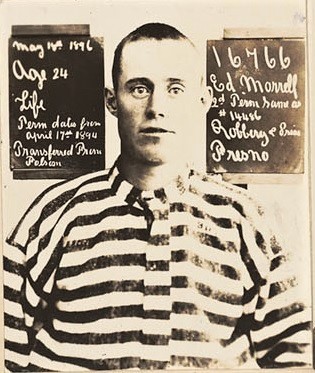
California prisons started off with convicts wearing civilian clothes, but quickly moved to prison issued striped shirts and pants.

They moved to prison made chambray shirts and dungarees around 1920.
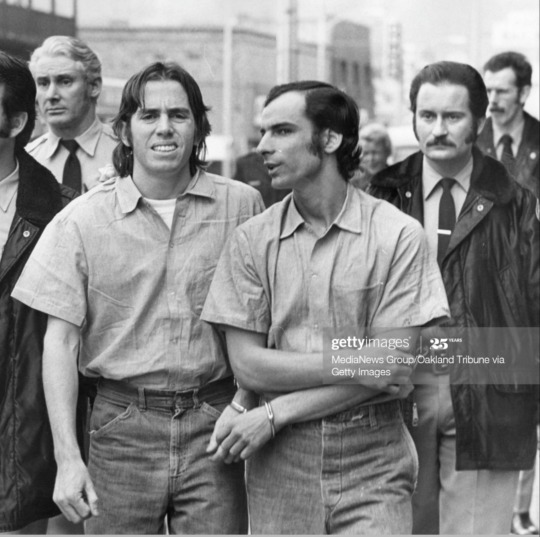
By the 1950s, the chambray shirts had snaps instead of buttons and were fairly standardized.


Currently, the button shirts have morphed to a scrub style and the pants are blue denim scrub style pants. The only remaining old school styled part of the uniform is the yard coat, which is basically unchanged from the 1930s.
A little fact about California prison is, because the movie industry was centered in Los Angeles, many of the early prison movies used California prison uniforms as costumes and models.


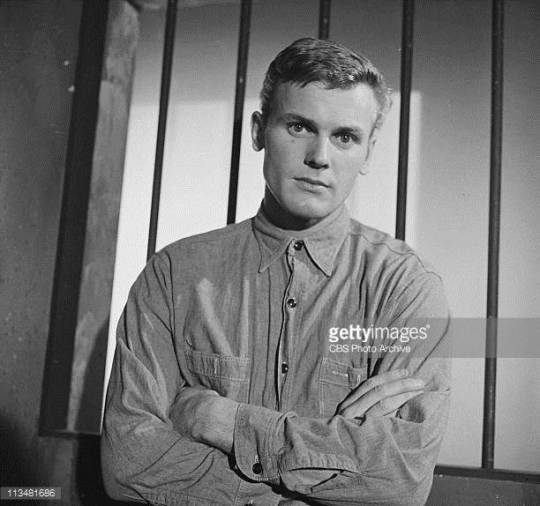
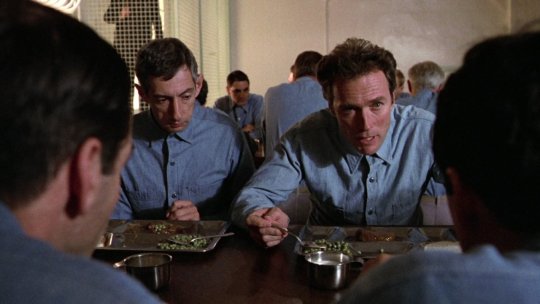
Question about History of State Uniforms
17 notes
·
View notes
Link
He served THIRTY-EIGHT YEARS in prison for a crime HE DID NOT COMMIT. It is cases like his that convinced me to object to the death penalty. We will never know how many innocent people were convicted & were put to death.
122 notes
·
View notes
Text

"YES, BUT JUST WHERE THEY'D LIKE TO KNOW," Toronto Star. April 24, 1943. Page 13.
----
Movie Provides Scant Clue to Pair Who Fled Folsom
----
Folsom Prison, Calif., April 24 - (AP) - Baffled bloodhounds and puzzled posses wonder if there will be a sequel. Frank Pedrini, 35, convicted of first degree murder, and William Smith, 34, convicted of assault with a deadly weapon, have disappeared from Folsom prison without even leaving a scent.
They escaped while 1,000 fellow prisoners were attending a movie. Its title "Somewhere I'll Find You."
#folsom prison#prison break#escape from prison#mysterious disappearance#wanted fugitives#escaped convicts#california prisons#movies in prison#world war ii#history of crime and punisment
0 notes
Text
We are all just prisoners of our own device.

#Hotel California#Eagles#prisoners#mind trap#prisoner#mind#lyrics#music lyrics#labyrinth#device#heal#fly#prison of the mind#mind control#control your mind#reality#California#Heaven or Hell#programmed to receive#leave#realization#LHA#1introvertedsage#lyric quotes#trapped
102 notes
·
View notes
Text
California to smash prison e-profiteers

On Weds (May 10), I’m in Vancouver for a keynote at the Open Source Summit and a book event for Red Team Blues at Heritage Hall and Thu (May 11), I’m in Calgary for Wordfest.

It’s a double-whammy that defines 21st century American life: a corporation gets caught doing something terrible, exploitative or even murderous, and a government agency steps in — only to discover that there’s nothing it can do, because Reagan/Trump/Clinton/Bush I/Bush II deregulated that industry and stripped the agency of enforcement powers.
If you’d like an essay-formatted version of this post to read or share, here’s a link to it on pluralistic.net, my surveillance-free, ad-free, tracker-free blog:
https://pluralistic.net/2023/05/08/captive-audience/#good-at-their-jobs
Man, that feels awful. The idea that extremists gutted our democratically accountable institutions so that there’s nothing they can do, no matter how egregious a corporation’s conduct is so demoralizing. Makes me feel like giving up.
But the law is a complex and mysterious thing. Regulators aren’t actually helpless. There are authorities, powers and systems that the corporate wreckers passed over, failed to notice, or failed to neuter. Take Section 5 of the FTC Act, which gives the Commission broad powers to prevent “unfair and deceptive” practices. Since the 1970s, the FTC just acted like this didn’t exist, even though it was right there all along, between Section 4 and Section 6.
Then, under the directorship of FTC chair Lina Khan, Section 5 was rediscovered and mobilized, first to end the practice of noncompete “agreements” for workers nationwide:
https://mattstoller.substack.com/p/antitrust-enforcers-to-ban-indentured
A new breed of supremely competent, progressive regulators are dusting off those old lawbooks and figuring out what powers they have, and they’re using those powers to Get Stuff Done. It’s like that old joke:
Office manager: $75 to kick the photocopier?
Repair person: No, it’s $5 to kick the photocopier, $70 to know where to kick it.
There’s a whole generation of expert photocopier-kickers in public life, and they’ve got their boots on:
https://pluralistic.net/2022/10/18/administrative-competence/#i-know-stuff
This is the upside of technocracy — where you have people who are appointed to do good things, and who want to do good things, and who figure out how to do good things. There are dormant powers everywhere in law. Remember when Southwest Air stranded a million passengers over Christmas week and Transport Secretary Pete Buttigieg responded by talking sternly about doing better, but without opening any enforcement actions against SWA?
At the time, Buttigieg’s defenders said that was all he could do: “Pete isn’t the boss of Southwest’s IT department, you know!” He’s not — but he is in possession of identical powers to the FTC to regulate “unfair and deceptive” practices, thanks to USC40 Section 41712(a), which copy-pastes the language from Article 5 of the FTC Act into the DOT’s legislative basis:
https://pluralistic.net/2023/01/10/the-courage-to-govern/#whos-in-charge
The failures of SWA were a long time coming, and were driven by the company’s shifting of costs from shareholders to employees and fliers. SWA schedules many flights for which they have no aircraft or crew, and when the time to fly those jets comes, the company simply cancels the emptiest flights. This is great for SWA’s shareholders, who don’t have to pay for fuel and crew for half-empty planes — but it’s terrible for crew and fliers.
What’s more, selling tickets for planes that don’t exist is plainly unfair and deceptive. A good photocopier-kicker in charge of the DOT would have arrived with a “first 100 days” plan that included opening hearings into this practice, as a prelude to directly regulating this conduct out of existence, averting the worst aviation scheduling crisis in US history. That’s what Buttigieg’s critics wanted from him: a competent assessment of his powers, followed by the vigorous use of those powers to protect the American people.
One domain that’s been in sore need of a photocopier-kicker for years is prison tech. America (“the land of the free”) incarcerates more people than any nation in the history of the world — more than the USSR, more than China, more than Apartheid-era South Africa.
For corporate prison profiteers, those prisoners are a literal captive audience, easy pickings for gouging on telephone calls, books, music, and food. For years, companies like Securus have been behind an incredibly imaginative array of sadistic tactics that strip prisoners of the contact, education and nutrition that governments normally provide to incarcerated people, and then sells those prisoners and their families poor substitutes for those necessities at markups that cost many multiples of the equivalent services in the free world.
Think of prisons that reduce the amount of food served to sub-starvation levels, then sell food at high markups in the prison commissary. For prisoners whose families can afford commissary fees, this is merely extortion. But for prisoners who don’t have anyone to top up their commissary accounts, it’s literal starvation.
This is the shape of every prison profiteer’s grift: take something vital away and then sell it back at a massive markup, dooming the prisoners who can’t afford it. The most obvious way to gouge prisoners is by charging huge markups for phone calls. Prisoners who can afford to pay many dollars per minute can stay in touch with their families, while the rest rot in isolation.
In 2015, the FCC tried to halt this practice, passing an order capping the price of calls, but in 2017, the DC District Court struck down the order, ruling that the FCC couldn’t regulate in-state call tariffs, which are the majority of prison calls:
https://www.cadc.uscourts.gov/internet/opinions.nsf/0/C62A026B396DD4C78525813E004F3BC5/%24file/15-1461-1679364.pdf
This was a bonanza for prison profiteers. Companies like Jpay (now a division of Securus) cranked up the price of prisoners’ calls. At the same time, dark-money lobbying campaigns urged prisons to get rid of their in-person visitation programs in the name of “safety”:
https://www.mic.com/articles/142779/the-end-of-prison-visitation
Not just visitation: prisons shuttered their libraries and banned shipments of letters, cards and books — again, in the same of “safety.” Jpay an its competitors stepped in with “free tablets” — cheap, badly made Chinese tablets. Instead of checking out books from the prison library or having them mailed to you by a friend or family member, prisoners had to buy DRM-locked ebooks at many multiples of the outside world price (these same prices were slapped on public domain books ganked from Project Gutenberg):
https://www.prisonpolicy.org/blog/2018/07/24/no-cost-contract/
Instead of getting letters and cards from your family members and friends, you had to pay to look at scans of them, buying “virtual stamps” that had to accompany every page (they even charged by the “page” for text messages):
https://www.wired.com/story/jpay-securus-prison-email-charging-millions/
Enshittification is my name for service-decay, where companies that have some kind of lock-in make things worse and worse for their customers, secure in the knowledge that they’ll keep paying because the lock-in keeps them from leaving. When your customers are literally locked in (that is, behind bars), the enshittification comes fast and furious.
Securus/Jpay and its competitors found all kinds of ways to make their services worse, like harvesting recordings of their calls to produce biometric voice-prints that could be used to track prisoners after they were released:
https://theintercept.com/2019/01/30/prison-voice-prints-databases-securus/
Of course, once the prison phone-carriers started harvesting prisoners’ phone calls, it was inevitable that they would leak those calls, including intimate calls with family members and privileged calls with lawyers:
https://www.aaronswartzday.org/securedrop-prisoner-data/
Prison-tech companies know they can extract huge fortunes from their captive audience, so they are shameless about offering bribes (ahem, “profit-sharing”) to prison authorities and sheriffs’ offices to switch vendors. When that happens, prisoners inevitably suffer, as happened in 2018, when Florida state prisons changed tech providers and wiped out $11.8m worth of prisoners purchased media — every song prisoners had paid for:
https://www.eff.org/deeplinks/2018/08/captive-audience-how-floridas-prisons-and-drm-made-113m-worth-prisoners-music
As bad as these deals are for prisoners, they’re great for jailers, who are personally and institutionally enriched by prison-tech giants. This is textbook corruption, in which small groups of individuals are enriched while vast, diffuse costs are extracted from large groups of people. Naturally, the deals themselves are swathed in secrecy, and public records requests for their details are met with blank, illegal refusals:
https://www.muckrock.com/news/archives/2018/may/25/laramie-county-prison-phones/
The “shitty technology adoption curve” predicts that technological harms that are first visited upon prisoners and other low-privilege people will gradually work its way up the privilege gradient:
https://pluralistic.net/2021/07/29/impunity-corrodes/#arise-ye-prisoners
Securus powered up the Shitty Tech Adoption Curve. They don’t just spy on and exploit prisoners — they leveraged that surveillance empire into a line of product lines that touch us all. Securus transformed their prisoner telephone tracking business into an off-the-books, warrantless tracking tool that cops everywhere use to illegally track people:
https://www.nytimes.com/2018/05/10/technology/cellphone-tracking-law-enforcement.html
In other words, our jails and prisons are incubators that breed digital pathogens that infect all of us eventually. It’s past time we got in the exterminators and flushed out those nests.
That’s where California’s new photocopier-kickers come in. Like many states, California has a Public Utility Commission (PUC), which regulates private companies that provide utilities, like telecoms. That means that the state of California can reach into every jail and prison in the state and grab the prison profiteers by the throats and toss ’em out the window.
Writing in The American Prospect, Kalena Thomhave does an excellent job on the technical ins-and-outs of calling on PUCs to regulate prison-tech, both in California and in other states where PUCs haven’t yet been neutered or eliminated by deregulation-crazed Republicans:
https://prospect.org/justice/2023-05-08-california-prison-phone-calls-free/
Thomhave describes how California’s county sheriffs have waxed fat on kickbacks from the prison-tech sector: “for example, the Yuba County Sheriff’s Office receives 25 percent of GTL/ViaPath’s gross revenue on video calls made from tablets.” Small wonder that sheriffs offices lobby against free calls from jail, claiming that prisoners’ phone tariffs are needed to fund their operations.
It’s true that the majority of this kickback money (51%) goes into “inmate welfare funds,” but these funds don’t have to go to inmates — they can and are diverted to “maintenance, salaries, travel, and equipment like security cameras.”
But limiting contact between prisoners and their families in order to pay for operating expenses is a foolish bargain. Isolation from friends and family is closely linked to recidivism. If we want prisoners to live productive lives after their serve their time, we should maximize their contact with the outside, not link it to their families’ ability to spend 50 times more per minute than anyone making a normal call.
The covid lockdowns were a boon to prison-tech profiteers, whose video-calling products were used to replace in-person visits. But when pandemic restrictions lifted, the in-person visits didn’t come back. Instead, jails continued to ban in-person visits and replace them with expensive video calls.
Even with new power, the FCC can’t directly regulate this activity, especially not in county jails. But PUCs can. Not every state has a PUC: ALEC, the right-wing legislation factory, has pushed laws that gut or eliminate PUCs across the country:
https://alec.org/model-policy/telecommunications-deregulation-policy-statement/
But California has a PUC, and it is gathering information now in advance of an order that could rein in these extractive businesses and halt the shitty tech adoption curve in its tracks:
https://docs.cpuc.ca.gov/PublishedDocs/Efile/G000/M478/K075/478075894.PDF
That’s some top-notch photocopier-kicking, right there.

Catch me on tour with Red Team Blues in Vancouver, Calgary, Toronto, DC, Gaithersburg, Oxford, Hay, Manchester, Nottingham, London, and Berlin!


[Image ID: A prison cell. Behind the bars is the bear from the California state flag. There is an old-fashioned telephone headset near his ear, such that he appears to be making a call.]
#pluralistic#smartprison#prison#prison-tech#photocopier kickers#california#carceral state#jail#profiteers#prison profiteers#marty hench#the bezzle#puc#jpay#public utility commission#Securus#global tellink#gtl#viapath#fcc#voip
45 notes
·
View notes
Text

Alcatraz Island
San Francisco, California
Bob Cronk
#alcatraz#alcatraz island#san francisco#prison#al capone#machine gun kelly#Alphonse Capone#tax evasion#George Kelly#birdman#Robert stroud#bob cronk#original photography#original photographers#photographers on tumblr#bobcronkphotography#pier 33#whitey bolger#photography on tumblr#california
95 notes
·
View notes
Text
Dis me, Bun Jovi, Adventure Bun ExtraordinHare!
We have arrived at our campsite in the California Redwood Forests and Lakes.
I so fricken excited! Lemme out, Lady Ma, before I tear my way through these bars. I have new land to explore!
I try to to go all Shawshank on this prison but it was too strong for my domesticated fluff. Now I try new tactic : sit back and behaving. Maybe I get out quicker on good behavior.
#BunJovi #Camping #Rabbit
17 notes
·
View notes
Text
When I post about keeping men out of women’s prisons I also mean no male staff.
A former correctional officer at California’s largest women’s prison has been arrested on suspicion of sexually assaulting at least 13 incarcerated people over nearly a decade, prosecutors said on Wednesday.
Gregory Rodriguez, who worked at the Central California Women’s Facility before he retired last year while under investigation, has been charged with 95 counts of sexual abuse, including rape, sodomy, sexual battery and rape under color of authority, the Madera county district attorney’s office said, as well as one drug-related charge. The assaults date back to 2014, but mostly occurred in the last two years, prosecutors said.
Advocates say the charges scratch the surface of systemic misconduct and sexual violence in the women’s prison, and correctional authorities last year said investigators had identified more than 22 victims of Rodriguez’s abuse.
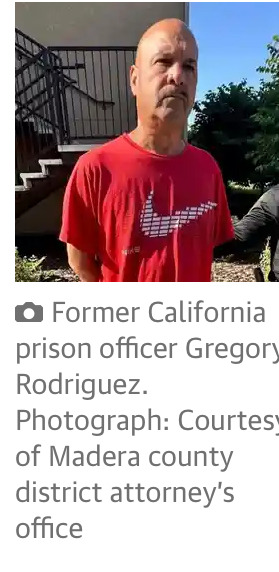
Rodriguez, 54, was being held on $7.8m bail, and it was not clear if he had a lawyer.If convicted on all charges, Rodriguez could be sentenced to more than 300 years in prison.
The DA’s office said the 95 charges include 39 individual sexual assaults. A 48-page complaint alleges that Rodriguez abused people throughout the facilities, including in a substance abuse building, in a clinic, before and after court appearances and in the parole hearing area where incarcerated people appear before commissioners who decide whether to grant their freedom. He is also accused of bringing heroin into the prison.
Advocates working with survivors said there was a culture of abuse, fear and retaliation in the facility that allowed him to continue his behavior for years.
At a state hearing last month, state senator Lola Smallwood-Cuevas noted that Rodriguez was accused of abusing more than 1% of the entire women’s prison population, and that allegations against him date back more than 10 years: “Twenty-two women came forward, and we know when women come forward, there are often women and other victims who don’t.”
She also noted a 2021 inspector general report that found the California department of corrections and rehabilitation (CDCR) poorly handled more than 60% of all complaints against staff by incarcerated people.
“If one officer is getting away with this for more than a decade, he is backed up by other officers and by the system, which is not only allowing the culture of sexual violence to continue, but condoning it,” said Colby Lenz, an advocate with the California Coalition for Women Prisoners, a group that has been assisting the survivors. “This is not just one bad apple.”
The women’s prison where Rodriguez worked for 12 years is located in Chowchilla, a small city about 120 miles (190km) south-east of San Francisco. Rodriguez retired in August after being approached about the assaults as part of an internal investigation, CDCR said in December.
The investigation, which found that Rodriguez may have engaged in sexual misconduct against at least 22 incarcerated people, was handed over to the district attorney’s office earlier this year. Rodriguez had worked for CDCR since 1995.
“These allegations are in no way a reflection on the vast majority of correctional officers who act professionally and do their best to make sure prisoners serve their time while remaining safe,” the DA’s office said on Wednesday. “It is our hope that the removal and arrest of this defendant encourages them to continue in their honorable profession upholding the law every day.”
Two unidentified accusers filed lawsuits in December alleging Rodriguez sexually assaulted them at the prison, which holds about 2,100 residents.
Survivors who have spoken up have faced persistent retaliation, said Lenz: “They live in terror both from the trauma of the sexual violence itself and ongoing harassment and retaliation by officers, and they never have a chance to properly grieve or heal. They have to continue to live with their abusers who have the keys to their cells.”
Advocates have called on the state to expedite the release of survivors.
“They are constantly under threat. It’s horrific and extremely isolating, and there is nowhere safe to turn inside,” said Amika Mota, executive director of the Sister Warriors Freedom Coalition, another group working with the victims.
A CDCR spokesperson on Thursday pointed to the department’s earlier statement on the investigation into Rodriguez, which said “retaliation against anyone who reports these kinds of allegations as well as retaliation against those who cooperate with investigations is not tolerated”.
A 2003 federal law known as the Prison Rape Elimination Act created a “zero-tolerance” policy for the sexual assault of incarcerated people. But California prison officials have still been accused of sexual misconduct in recent years. That includes Israel Trevino, a former correctional officer at the Central California Women’s Facility, who was fired in 2018 after being accused of groping and making sexually harassing comments.
An Associated Press investigation found that a high-ranking federal bureau of prisons official, who formerly worked at a women’s prison in the San Francisco Bay Area, was repeatedly promoted after allegations that he assaulted detainees. Another investigation found a pattern of sexual abuse by correctional officers at the women’s facility. The US government is now facing a backlash for seeking to deport survivors of the abuse who are also non-citizens.
Recent civil cases have also exposed widespread sexual abuse of youthinside juvenile prisons in Los Angeles.
These types of accusations extend beyond California. Former prison officers in Kentucky and New Jersey have recently been charged with sexually abusing or assaulting incarcerated people.
The Associated Press contributed reporting
#USA#california#GregoryRodriguez#KeepPrisonsSingleSex#Central California Women’s Facility#Staff women’s prisons within women#California department of corrections and rehabilitation (CDCR) Covered for abusers#California Coalition for Women Prisoners
18 notes
·
View notes
Text
"California used to need lots and lots of prisons. Big prisons, little prisons, prisons with special cells for gang leaders and prisons for those convicted of nonviolent financial chicanery. There were so many prisoners packed into so many prisons that federal courts intervened, mandating that the state find a way to alleviate the overcrowding.
At the inmate population’s peak in 2006, California incarcerated 165,000 people in state prisons.
Today — after a decade of sentencing reforms and a surge of releases tied to COVID-19 — California prisons house a little more than 95,000 people.
So how many prisons does California actually need?
“Difficult decisions have to be made, but if we don’t make those decisions, the alternative is paying hundreds of millions for prison beds we don’t need to be paying for,” said Caitlin O’Neil, an analyst at the Legislative Analyst’s Office.
O’Neil is the co-author of a new report that lays out how the state can close up to nine of its 33 prisons and eight yards within operating prisons while still complying with a federal court order that caps the system’s capacity.
The potential closures signal a seachange in California criminal justice, representing the wind-down of the tough-on-crime policies that packed prisons in the 1990s and offering one of the few ways the state can cut costs in its $18 billion prison system.
California prisons held about 120,000 inmates as recently as 2019. That year, newly elected Gov. Gavin Newsom announced a goal to close a single prison during his tenure.
“I would like to see, in my lifetime and hopefully my tenure, that we shut down a state prison,” he said that year in an interview with The Fresno Bee editorial board.
Since then, he has already effectively closed two and his administration has plans underway to shut at least two more.
In September 2021, the state closed Deuel Vocational Institution in Tracy. The California Correctional Center in Susanville is scheduled to close in June, along with yards at six other prisons.
Two other prisons, in Blythe and in California City, are scheduled to close by March 2025.
Even after those shutdowns, according to the LAO analysis, the California Department of Corrections and Rehabilitation has the space to close five more entire prisons by 2027. Today, the corrections department operates 15,000 empty beds, according to the LAO. That number is expected to reach 20,000 empty beds by 2027.
“The state pays for empty beds, and that number hasn’t been justified at this point, “O’Neil said. “It’s really just math, simple arithmetic.”" ...
For prison abolitionists like Woods Ervin, co-director of the anti-prison activist group Critical Resistance, the LAO report’s conclusions were “super exciting” and come close to their group’s goals of closing ten prisons, and announcing the closures by 2025.
“This is big,” Ervin said.
-via Cal Matters, 2/23/23
#prison reform#prison justice#criminal justice#prison#california#united states#us politics#gavin newsom#good news#hope#we still have a long way to go but this speaks to a lot of really important progress
66 notes
·
View notes